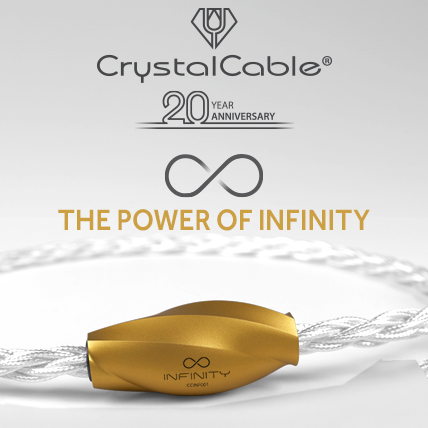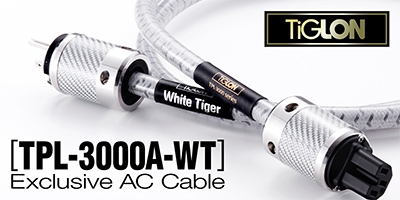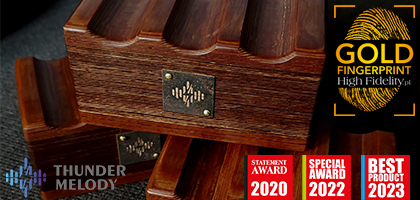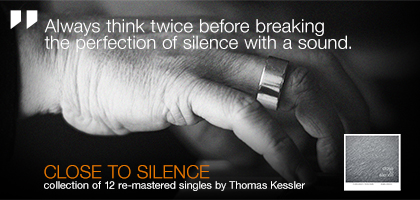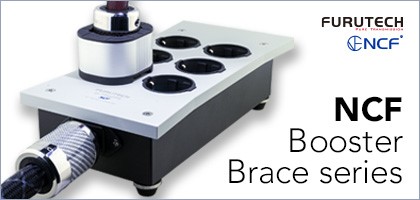No. 258 November 2025
- COVER REVIEW: BLADELIUS Oden II Class-A ⸜ integrated amplifier » SWEDEN
- INTERVIEW: "The Editors" series № 37: ANDREW SIMPSONS • Audiograde ⸜ editor-in-chief » UNITED KINGDOM
- TECHNIQUE: digital recorders: DENON PCM part 2 - DN-23R tape recorder || 1972-1974 » JAPAN
- REVIEW: ACOUSTIC REVIVE RTP-4EU Final ⸜ AC power strip » JAPAN
- REVIEW: AUDIO REVEAL Classic ⸜ integrated amplifier » POLAND
- REVIEW: FOUND SOUND DAVIO Davio Azure ⸜ digital-to-analogue converter » POLAND
- REVIEW: LAIV Harmony GaNM ⸜ power amplifier • monoblocks » SINGAPORE
- MUSIC ⸜ Our albums series: ASTOR PIAZZOLA AND HIS TANGO QUINTET, Live in Lugano 1983, Ermitage/AudioNautes Recordings, Ultimate HiQualityCD

|
An audiophile on holiday 
Although they’re blurry and fragmented, I’ve got very vivid memories of taking walks with my parents by the Biała river in Bobowa, the town I lived in back then. The mountainous river is pretty small, with scenic river bends carved into the shores, constantly in a state of flux; wild and not easily accessible on some stretches. We had a place of our “own”, probably found by my father, in one of the river’s bends, with a “stony beach” on which my mother set up her lounge chair, and we laid out some blankets to sit on. Freshly-caught fish – mostly trout – sandwiches, and drinks, as well as my first attempts at swimming. And a radio. We always had our radio during these outings, at least as far as I can remember. The “Biwak” FM radio, manufactured by Unitra-Diora, stood beneath the lounge chair, always on, emitting the programs of the Polish Radio III “Trójka”. And it’s what I remember best. My wife’s radio-related memories are also interesting and equally important. In her case it was the “Dorota” model on which she listened to Summer with the radio programs that were broadcast only on LW. Both memories have that emotional factor and the form of the radio receiver in common – they were portable devices. 
“Portable” meant something different in the 1970s and 1980s. Back then it meant a small, usually battery-powered, easily transported device that could play music in “field” conditions. Now the accent has moved towards “personal” – nobody plays their music aloud from their “transistor” anymore, because everyone wears headphones. Now it’s music “on the go” and “only for me”. The second aspect is related to miniaturization. Although it was also important back then, its scale is beyond comparison. Back then it was the Japanese manufacturers that led the pack, and the epitome of these changes was the 1979 release of the TPS-L2 portable cassette player, better known as the Walkman. Sony, it’s creator, at first didn’t put much weight to its name, and – as you can read at “Telix.pl” – sold it in the US under the name “Soundabout”, “Stowaway” in the UK, and “Freestyle” in Sweden (see HERE). Its size and weight (390 g) weren’t the only novelties – it was the first time in history that you could take your own cassettes and play them on the go. And that meant expanding your field of freedom. The “Discman” CD players were later created on the same principle in 1984, followed by the portable versions of Mini Disc players. Up to 1996, over 100,000,000 Walkman players were sold worldwide. In 2010 Sony stopped the production of cassette tapes and cassette tape players. That was only three years ago! 
In the meantime, the Japanese manufacturers faced a growing competition that soon surpassed its masters and made they seem to be the imitators now. We’ll come back to that in a short while. Before that happened, a new computer-related generation of music lovers, fans, and occasional listeners came to power. The PC (and the Mac in the USA) became a user-friendly sound source – a file player, a music library, and a headphone amplifier in one. The basis for this revolution was the MP3 file encoding format that created a whole sub-group of devices – portable MP3 players. 
Anyway – a demon was set out of its box. From 1991, which is when the first codec was presented, computer users used the goodies that the developing Internet had to offer and soon thereafter Internet piracy changed the entire music industry. The era of non-material media began, leading up to the situation we’re at now – the decline of physical formats, including the CD. 
On October 23rd, 2001, Steve Jobs, the late owner and head of Apple, the promotion master who perfectly guessed people’s needs, capable of even creating their needs only to fulfill them later, presented the world with a device that was meant to change the thinking of the entire generation – the iPod. The device was only compatible with Mac computers, and was a digital music file player, although it could also be used as a portable external memory. The first model (Generation 1), called the “Walkman of the 21st century”, had a built-in 5 GB Toshiba hard drive and connected to a computer through a FireWire link. The player’s enormous success was due both to Apple’s brilliant advertising campaign, as well as its integration with Apple’s software and the iTunes store. In a short time many began to copy the idea, although nobody has ever been able to replicate Jobs’ success. His product was a sophisticated development, in terms of design and UI alike, of MPMAN’s idea, and it turned the world upside down. The following statistics shows the sheer scale of the sales: in the first three months of 2013, 12.7 million iPods were sold. Although there has been sales drop (compared to the first three months of 2012 where 15.4 million were sold; see HERE, and HERE) its still a good representation of the whole business impact. By the end of the year 2012, 375 million iPods and 365 million iPhones had been sold worldwide. 
The iPod, and then the iPhone and iPad have become synonymous with modern thinking and good taste. You just had to own the white player. A whole new branch of industry developed around it, manufacturing iPod-compatible products – headphones, active speakers, docking stations, cables, amps and D/A converters. HiFiMAN The iPod is a classic. It looks great and it’s intuitive to use. It’s not very big. But it’s got one flaw – it doesn’t sound too good. Although most users don’t seem to notice that, for anybody who cares about music in all of its aspects, including the sonic dimension, it’s a major obstacle. Ultimately what we aim for is getting music to sound like it would at a live performance, or the way it was recorded (these are the two camps of what audio’s objective should be). That’s why iPod-compatible external D/A converters and headphone amplifiers made such a splash amongst perfectionists. Apple’s player turned out to be capable of delivering really good sound. But for some, it was still not good enough. Another problem was the fact – as I’ve mentioned previously – that the iPod couldn’t play back hi-res files. This opened up a doorway for other manufacturers, including HiFiMAN, a US-based company that does its research and production in China. 
The company was founded in 2007 by Mr. Fang Bian, and its name refers directly to the MPMAN players. It offers planar magnetostatic headphones and portable music players, including high-resolution ones. I’ve used headphones and file players with their logo for two years. The first player I got was the small HM-602 (see HERE), followed by a large, cumbersome HM-801, equipped with fantastic PCM1704 DAC chips. Their sound was very good, much better than from an iPod Classic 6.5. But they had their own issues, too. The first was their design – they were angular, ugly rectangle boxes with a rather user-unfriendly user interface. The HM-801, on the other hand, was just big. On the other hand, one of their advantages was their functionality – they could also work as D/A converters equipped with a USB port, and they accepted SD cards up to 32 GB. Additionally, the HM-801 accepts swappable headphone amplifier boards, including one with a balanced output. 
While both were capable of file playback up to 24-bit and 96 kHz, they lacked 88.2 kHz sampling frequency, not to mention going higher than 96 kHz. For the last three years the manufacturer has been working on a 2nd generation player, which resulted in presenting the new HM-901 in January 2013. It’s still quite sizeable, although smaller than the HM-801. Its front panel has a similar size to the HM-602 and iPod, but the whole unit is much thicker. It is equipped with a medium-size color display screen, capable of displaying (unfortunately only fragments of) album artwork. The most important feature is that it’s capable of playing WAV and FLAC: 16/44.1, 16/48, 24/88.2, 24/96, 24/176.4, 24/192, and additionally MP3, ALAC, AAC and AIFF: 16/44.1/ and 16/48. Its enclosure size results from the employed technology. Inside, we will find two quality Sabre ES9018 DAC chips, a 24/192 upsampler and a sophisticated headphone amplifier. The latter is swappable, just like in the case of its predecessor. The available amplifier cards include:

The player looks really cool. It has a somewhat retro-feel (this curled volume knob), is housed in a solid casings made of aluminum and plastic and a sensible LCD display. It shows the right amount of information – we know the signal sampling rate, its bit depth and bitrate. We will also read track names, but not ID tags. User interface is quite sensible and uses a round, although it has no chance of beating the iPod. Importantly, the HM-901 accepts SD memory up to 128 GB (including micro SD). Fully charged battery allows 6-7 hours of playback of hi-res files. A docking station is being developed and will be available. The player sells for 4,499 PLN in Poland. Coming over from the HM-602 to the much bigger and less portable HM-801 I got a much deeper, larger, and more resolving sound. Moving on to the HM-901 is a much bigger jump. I keep aside the new player’s 88.2 kHz and 192 kHz playback capability, which is and important but not key change. The sound of the new player from Mr. Bian resembles that of really expensive CD players and headphone amplifiers. It is very clear, resolving and open, being deep at the same time. It is never bright or clinical, even with the very demanding HE-6 headphones. Should anyone not feel fully satisfied, there is also a “Vintage” switch to decrease the treble level by 3 dB. I didn’t use it. 
The player sounds very stable, i.e. it remains even with various headphone types, without dominating but rather “leading” them. We get a huge soundstage, which I could mostly appreciate with an audiobook of Blade Runner, with binaural sound effects. But even vintage mono recordings can gain something extra – the soundstage depth, if what I heard on the headphones can be called that, was fantastic. The sound was incredibly resolving. Differences between CD quality and hi-res files from the same album were significant, which doesn’t happen even with some full-size CD and file players. High resolution added some depth and breath, but also definition; the CD version sounded grey in comparison. I wouldn’t expect much in the bass extension department, at least not with the headphone amp board provided with the reviewed player. I auditioned all headphones I had at home and the situation was each time similar– bass depended on the headphone used, but even the Sennheiser HD800, capable of very low extension, didn’t sound with such momentum like when they are driven by an external headphone amp. Highly compressed recordings that hadn’t been improved during mastering had audible problems with emphasized upper midrange. The problem was not serious enough to give up listening, but it was there. The HM-801 proved better in this respect. Its sound was less resolving and not so spacey, but had a lower tonal balance, which masked problems with music material. 
Mr. Bian says about his new music player that he sees an analogy between digital photography and portable audio. A standard camera does its job well, but it cannot be compared to a professional SLR. The iPod is the same – its sound is adequate to the people’s needs, but it cannot be compared to high-quality digital audio players. He continues to say that the HM-901 has been compared in so-called “blind auditions” to the best full-size components and had the upper hand in these comparisons. Manufacturer: HiFiMAN PHILIP K. DICK 
|
The accent that is placed on one of the two sides is different from magazine to magazine. The very best ones are capable of combining the subjects of sound quality and music, i.e. the form and content. In the end, WHAT we listen to is equally important as what we use to PLAY IT or HOW we listen to it.
I try to write about music as often as possible. In addition to music CDs there’s a whole other world of so-called audiobooks. Their immense popularity is somewhat of a surprise to me, especially since most of them are just books read by a voice actor, sometimes with some music or sound effects. They’ve replaced the once-popular radio plays or radio dramas, but they also brought along a whole new type of aesthetics. There’s no way around saying it – I don’t like this type of medium. Please don’t get me wrong, because it’s a great way of experiencing literature, especially in the car, but it has little in common with reading a book to me. It can be a great supplement, but it shouldn’t replace the very act of reading. That’s why I’m not in favor of the fact that radio dramas were replaced by audiobooks (see more about radio dramas HERE). 
The audiobook I’ve been talking about is a perfect example of how in the 21st, headphone-dominated century you can still prepare a nice radio play. Because that’s how I interpret what’s been made of Dick’s novel. The recording is really brilliant to listen to. The spatial effects make your heart skip a beat, even if you think you’ve heard them all. Some of them, particularly the human voices, sound like what you hear on the 99 album by Abraxas (now available as a gold CD – a must have!), most of them are completely new to me, however. The sound proportions and color are beautifully picked. In the narrator’s case I would’ve dropped some of the “throat” and used more “diaphragm”, lowering its tonality. But it doesn’t interfere with how pleasant it is to listen to. It might actually only be an encoding error. The album was recorded in a rather low-bitrate MP3 format, after all. It’s kind of a shame, because some of their hard work went to waste. I understand that the point was to make playback possible on any computer and car audio, but I think that adding a second disc (DVD, BD) or USB with a hi-res version with lossless material would’ve been appropriate. However, it was all an incredible surprise and absolute pleasure to me, as I didn’t know there are people with such great sonic sensitivity in Poland. Stereotyp Studio and Kamil Sajewicz, the director, are responsible for the sound effects – bravo, and respect! And one more thing – as I recommend this audiobook to all you readers I implore you: buy it, don’t download it. Its preparation was very costly and if the publisher sees no financial potential in it, they’ll never release anything else. And we need this sort of publishing more than ever before. And right now binaural recording has a chance of fulfilling its destiny – after all, there’s a pair of headphones in every house nowadays, right? See: audioteka.pl 
Cardas 
The specialization of specialized audio manufacturers, regardless of how ridiculous it sounds, is a fact confirmed on a daily basis through user choices. Buying speakers, we first look for them at a speaker manufacturer, for electronics – we check out the brands famous for their electronics, and the same thing with cables. There are still manufacturers, however, that offer whole systems: Goldmund, Ancient Audio or Rega, to name a few. They have been and are a minority, though. 
The company has been making cables from 1987, using a “golden ratio” in their products, and in January this year, at an exhibition in Las Vegas, they presented two earphone models – a slightly cheaper Model 1, and a more expensive, and more refined Model 2. Both are concealed under the name EM 5813, where EM stands for Ear Mirror. Their creation process took a very long time, and that’s because George Cardas, the company’s owner, approached the topic with a very fresh attitude – he filled pre-made “frames” with his own ideas. Like he said, he built prototypes, measured them, listened to them, improved them, then measured, listened and improved some more, and so forth. The product of this research is a pair of earphones that are meant to resemble a human ear as closely as possible, but mirrored. Instead of Mylar that the standard membranes are usually made of, the EM 5813 uses an ultra-thin material called polyethylene naphthalate (PEN); the membrane has the diameter of 11.5 mm. The housing has been made of a beautifully-finished copper-colored alloy. The alloys, made according to Cardas’s needs, have been imported from Germany and the USA, and the remaining parts are from China. The membrane is an exception, as it’s custom-made in Japan. The earphones use a Clear Light cable. The connector cable is thick and quite stiff – it’s probably the heaviest cable I’ve ever come across in earphones. They look beautiful. 
The sound of these earphones cannot be mistaken with anything else. The bass is what gives it a unique flavor (to clarify – the manufacturer just introduced special acoustic filters that reduce the amount of bass – they are placed on the drivers. They’ll definitely come in handy, although the model’s particular sonic characteristics is what makes it special for me; the choice is up to the user, though, which the manufacturer deserves to be praised for!). In absolute categories, there is a lot of it, and the treble is withdrawn. And that’s regardless of the used sound source, so it’s not because of some impedance mismatch. You can hear that this is precisely what the manufacturer was going for. Never ever will a recording sound aggressive and unpleasant or shallow and thin. Quite unexpectedly, this is beneficial to the midrange. When listening to new recordings, such as Random Access Memories by Daft Punk (16/44.1 rip, 24/96 download) and Electric Music by OMD (16/44.1 rip), or some of Yes’s older albums, available now as 24/192 files from HDTracks, the vocals and guitars would always come to the foreground. A slightly emphasized upper midrange of these recordings, shown exactly that way by the HiFiMAN player which I used for most of my auditions (though not only – the review was also conducted using my reference headphone amplifier, the Bakoon HPA-21), was present, but smooth. So was the bass – strong, full, but with a rounded attack, equally soft as the rest of the range. It’s really surprising how non-audiophile (as in, “human”) the earphones from a strictly audiophile-oriented manufacturer can sound. I perfectly understand those who are frustrated with constant chasing of perfection at all costs, and notice the loss of the “spirit” of music, as if relying on its “letter” was meant to solve it all. The Cardas earphones are pleasant to listen to and give a lot of satisfaction. They are neither resolving nor selective and have a clearly defined tonal balance, far from “neutral”. Despite that I spent many comfortable hours with them, without any clear need to switch to something else. The only problem, to me, was the rather heavy cable – but I’ve mentioned that already. A wonderful finish, and a great pair of well-presented headphones. They’re very effective and will sound loud with any music player, including smartphones (I’ve tried them with the Samsung Galaxy S II). The great volume control in the HiFiMAN player worked really well with these earphones – even at the lowest volumes there were no problems with channel balance. And when using a classic potentiometer it one of them would almost certainly be quieter. Manufacturer: Cardas Audio AKG 
If you want something better, you’ll have to pay more. And reach for a product – you can’t escape this – from a specialist. The Austrian company AKG, currently owned by Harman International, specializes in microphones and headphones, and has offered a model packed tight with technology and more ambitious than most other internal headphones. It’s a three-way build, with a hybrid system – one dynamic driver and two “dual balanced armature”. The dynamic driver handles the low frequencies, while the two others upper midrange and the top. Their mass has been chosen so that they don’t need electric filters, and the crossover happens mechanically, which means the absence of phase shifting. The earphones have a metal housing, a thin – but durable – cable to which you can attach a volume controller and phone microphone. You can also correct the K3003’s sound. For that purpose, you get a full set of acoustic filters that you attach onto the headphone drivers, where they meet your ear canal. The ones available are “Bass Boost”, “Reference Sound” and “High Boost”. Although the earphones came pre-assembled with the middle one, I quickly replaced the filter for the bass booster. While this shifted the tonal balance slightly to the lower frequencies, the sound had a larger volume and reminded me much more of what can be heard from the very best headphones – the dynamic HD800 from Sennheiser and the HE-6 magnetostats from HiFiMAN. The AKG’s finish is fantastic, on the same level as Cardas’. The details are even better – from a small, leather (“eco-leather”) headphone box, to the extras. You can see what you pay for. Or not – in the end, they’re just tiny earphones that cost way more than “full-size”, pimped-out headphones. The decision depends on how you view things, their value, and whether you prefer uniqueness and timelessness over affordability – each perspective, as long as it’s honest, is equally valid. For me, the AKG is a masterwork and an object of desire. 
It would be that way regardless of how they sounded. Their design, finish and packaging is an example of high art. But it so happens that they’re the best earphones I know, and by a long shot. Their sound is very focused and full. The tonal balance is nearly the same as that of large headphones. But most importantly, they have a unique, absolutely incredible resolution and fantastic selectivity. None of the elements overshadows the others, they don’t fight, but rather complement one another. The bass goes down very low but is well-focused and has great definition. The presentation is spacious and free of distortion. It’s difficult to point out something that should be improved. And only connecting to my reference amplifier the HiFiMAN magnetostats or top Sennheisers puts it back into proportion. The former are even more resolving and differentiate the treble better. The sound of drum cymbals, as well as the sound of trumpet, for example, is more “lively”, more dynamic, and thus more natural. On the other hand, the Sennheisers show a larger volume of sound better define the lowest bass. What the AKG was able to achieve in this department was impressive, but – in the end – it could be better. And the volume and dynamics are where the only noteworthy differences lie. But if you take into account the fact that you’re talking about earphones, it all bleaks out, rubs off and doesn’t matter anymore – literally. When connected to a high-quality portable player, such as the HiFiMAN HM-901 or – even better – a portable headphone amp, such as the ALO Audio The Continental v3, they will be the travel/holiday companion of your dreams. A pricey one, but nothing comes free in life. You’ve just got to decide whether you’re willing to pay this much for this and that. The AKG K3003 will be one of the best choices of your life, as long as you have the possibility and the desire of something truly from the top shelf. 
Manufacturer: AKG EN ROUTE I’ll admit, I haven’t listened to anything over the summer vacations for the past few years. I also listen to the radio while out in town much more rarely than I used to. When I’m on holiday, I rest, much like when I’m not doing any auditions. A few hours a day, everyday, in front of my speakers with large headphones on my head is completely sufficient. I know, however, that many “High Fidelity” readers do the exact opposite – they spend most time with headphones on while they’re en route somewhere. Good – it’s great that we’re different. All of the products I present are intended for them. I chose them on purpose, with the intention of showing what modern technology has to offer. And we’ve never been this spoiled before. Music file players, headphone pre-amps and headphones themselves – there are more of them now than ever before. You can get lost in it, even more so since among the extraordinary products there are a lot of mediocre ones, and even some complete garbage. And as J.R. Isidore, a character in Philip K. Dick’s Blade Runner says, “kipple reproduces itself so one needs to fight the kipple”. We’ll never win with it, but we can introduce some order into our own, private, personal space. The HiFiMAN HM-901, the Cardas EM 5813 and the AKG K3003 do that “cleansing” job. They order the world aesthetically, both as the works of industrial design, and as portals to another, better world – the world of music. 
As I’ve said before, you don’t have to spend 10,000 zlotys to be able to enjoy portable audio. You can start your adventure with portable audio using a smartphone and a pair of good headphones. The Cardas earphones do this job really well, as they don’t let you get annoyed, yet they supply you with high quality sound focused on the bass and midrange. And they’ll look great. The next step is up to the user – it can be swapping the headphones for the AKG, or purchasing a music player. The simplest choice will be the iPod Classic. But if you want something truly high-end, you’ll have to consider something like the HiFiMAN, or the Astell&Kern AK120. There’s no other way. It’ll get more serious, and heavier than your phone – these players aren’t that small. And you can go even further. If you use your portable audio not while you run/travel, but more stationary, you should consider a headphone amplifier of that sort – there’s an abundance of them. I’ve been using The Continental amp for the past two years. It’s sold by ALO Audio (incidentally, it’s manufactured by Syngergy HiFi that we know very well). I started with the V1, now I’ve got the V3. It’s an amp that uses a miniature Thomson 611 vacuum tube in the output, small and useful – the size of the HM-901. We connect our music player’s line out connector to the amp, and plug our headphones into the amplifier. What we get is a much deeper, more powerful and better-controlled sound. No portable player is capable of doing that. Its price (in the USA): $529. „HiFiStatement.net” and „High Fidelity” 
I’ve mentioned it in last month’s editorial, but it’s time to elaborate. Starting on August 1st, 2013, the German magazine “HiFiStatement.net” and “High Fidelity” have established a fixed cooperation in terms of joint projects and politics and exchange of materials. Select reviews and interviews that are currently available in HF will be available in German from now on, and select original material that has been published in German – available to Polish and English speakers. We’ll begin with an interview with Masaki Ashizawa, the head of Kondo (Audio Note Japan), conducted by Jürgen Saile. 
“HiFiStatement.net” is a relatively new project, but its lead by a veteran of the audio world, Dirk Sommer. I met him years ago as the editor-in-chief of “Image HiFi”, a printed magazine. He’d been already combining editorial work with his second passion – sound production. And very particular sound, at that. Dirk is an enthusiast of analogue technology and all of his work is registered on an analogue tape, and released on vinyl. Many fantastic titles have been released under “Image HiFi” label, including re-editions of Bert Kaempfert (the “Forty-Five” series) and a special test disc, Vinyl Essentials. We’ve found out about the problems on the German publishing market from the interview I’ve conducted with Cai Brockmann, the current editor of “FIDELITY”, and previously… Dirk’s work colleague from “Image HiFi” (see HERE). But because I had this opportunity, I asked Dirk – the source – personally, and the answer can be found in the interview I conducted with him, published in this issue of “High Fidelity”. Dirk is still an active sound producer, aside from leading his magazine, and also a publisher from now on. As he left “Image...” he founded his own record label, Sommelier Du Son. I’ve received Inga Rumpf’s album White Horses from him. An unbelievable recording and some great music! The double album has been released on 180 g vinyl as part of a series dubbed the Triple A Series, which speaks for itself. We have a few things planned together with Dirk, and we’ll see what comes of them, but I’ve got a positive attitude towards it. We’re living in very interesting times indeed! „6moons.com”, „EnjoyTheMusic.com”, „Positive-Feedback.com” and „HiFiStatement.net” We’re the only Polish audio magazine which is also released in English.
|
About Us |
We cooperate |
Patrons |
|
Our reviewers regularly contribute to “Enjoy the Music.com”, “Positive-Feedback.com”, “HiFiStatement.net” and “Hi-Fi Choice & Home Cinema. Edycja Polska” . "High Fidelity" is a monthly magazine dedicated to high quality sound. It has been published since May 1st, 2004. Up until October 2008, the magazine was called "High Fidelity OnLine", but since November 2008 it has been registered under the new title. "High Fidelity" is an online magazine, i.e. it is only published on the web. For the last few years it has been published both in Polish and in English. Thanks to our English section, the magazine has now a worldwide reach - statistics show that we have readers from almost every country in the world. Once a year, we prepare a printed edition of one of reviews published online. This unique, limited collector's edition is given to the visitors of the Audio Show in Warsaw, Poland, held in November of each year. For years, "High Fidelity" has been cooperating with other audio magazines, including “Enjoy the Music.com” and “Positive-Feedback.com” in the U.S. and “HiFiStatement.net” in Germany. Our reviews have also been published by “6moons.com”. You can contact any of our contributors by clicking his email address on our CONTACT page. |
 



|
  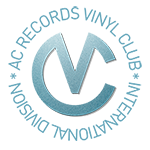 |
main page | archive | contact | kts
© 2009 HighFidelity, design by PikselStudio,
projektowanie stron www: Indecity
